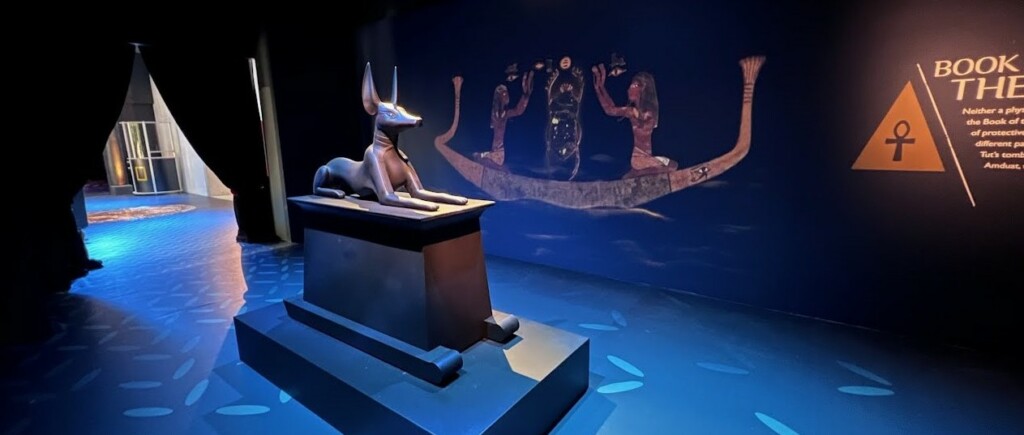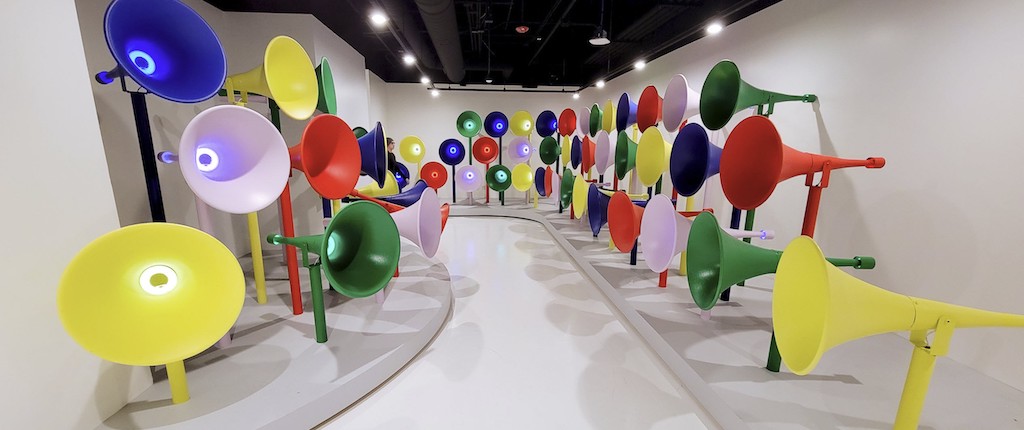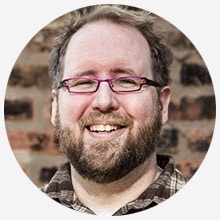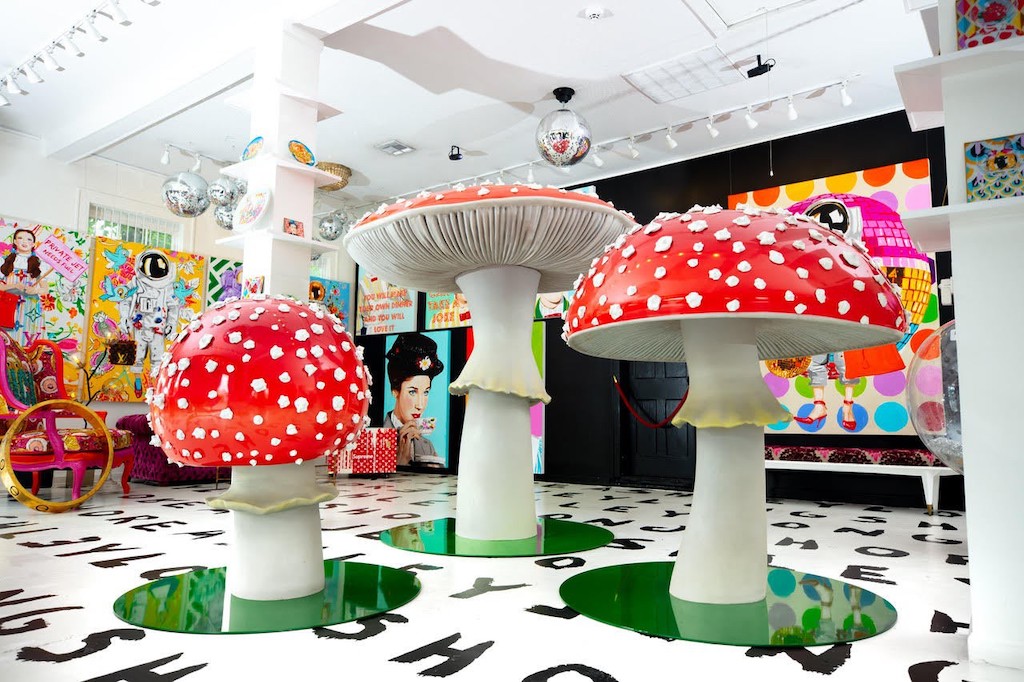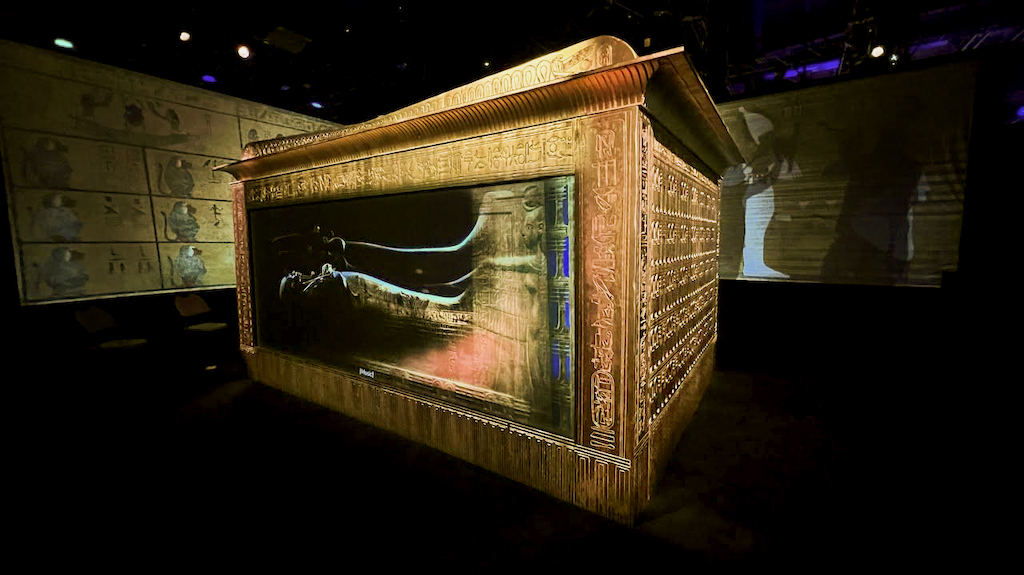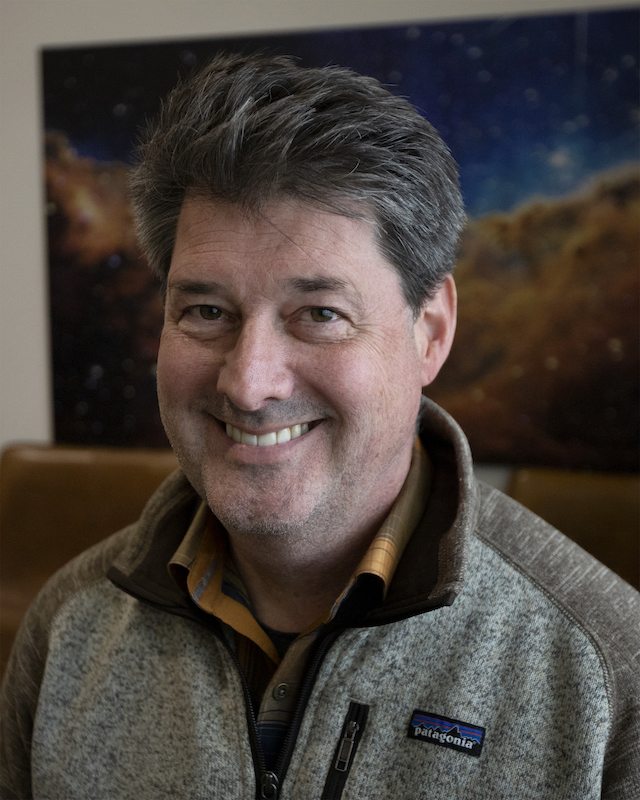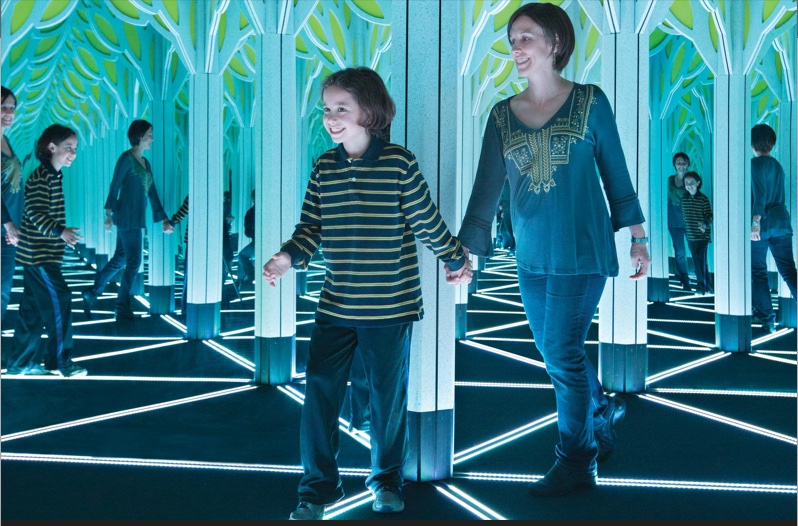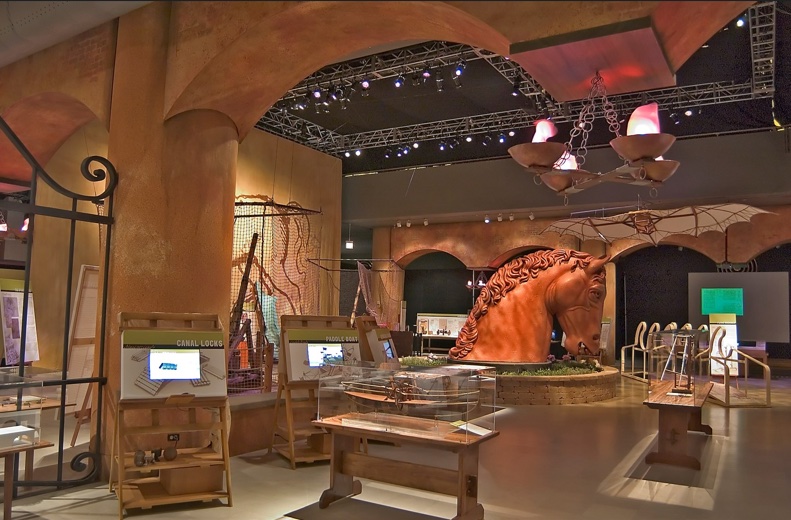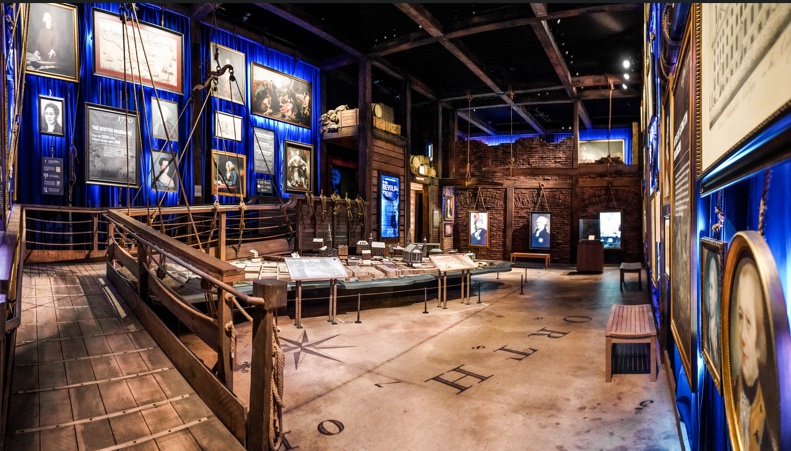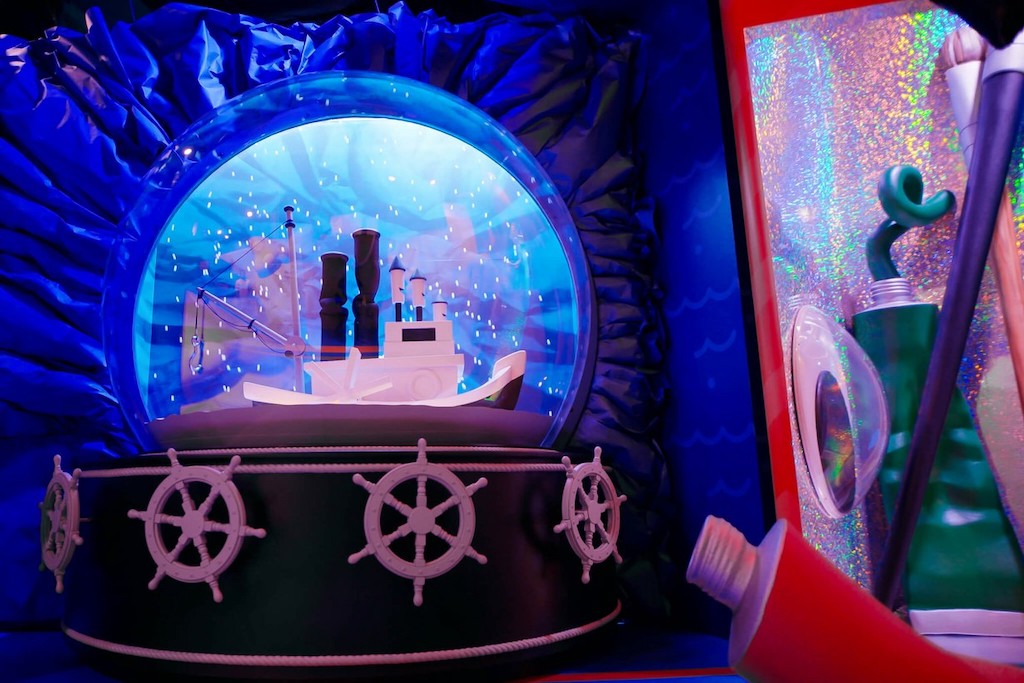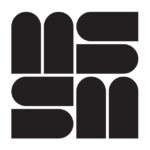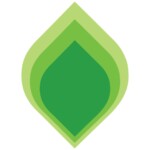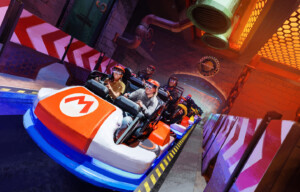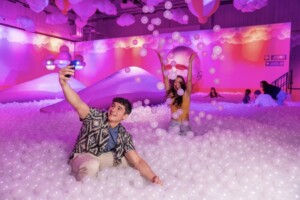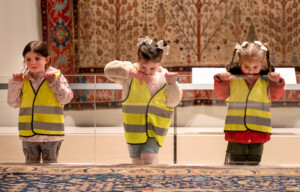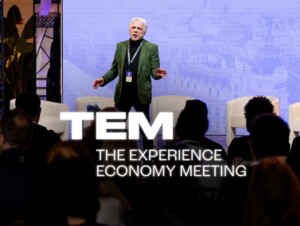Chicago-based design and fabrication company Bridgewater Studio is a leader in branded art installations and themed environments for museums, trade shows, retail venues, brand experiences and more. It was founded in 2015 and occupies a unique space in the sector. Recently, the company has been focusing on strategic growth, without compromising on the elements that have always characterised its vision and methodology.
As part of this growth strategy, Bridgewater Studio is now taking on John Beckman as senior vice president of design and development.
Beckman speaks to blooloop about his new appointment, along with co-founder Eric Cup and chief creative and operating officer Chris Wilson. They also talk about the company’s trajectory and the elements that differentiate it from its competitors in the space.
Who builds all this stuff?
The company was founded by Eric Cup, Patrick Justice and Chris Cleek. Encapsulating exactly what Bridgewater Studio does, Cup says:
“When I introduce the company to someone who is not familiar with our market, I say, ‘When you go to a museum, or when you’re in one of those retail stores and you look around and think, ‘Oh my God, this is such a great environment: I wonder who builds all this stuff?’ It comes from a company like ours. We work with clients, customers, brands, agencies, and cultural heritage institutions, take their ideas, and work a design, development and fabrication process that creates a story for the real world.’”
The three founders, who had known each other for years, joined forces to address an underserved niche in the industry. They began by creating speciality props and elements for the television and film industry in Chicago, including the Dick Wolf Chicago franchise.
To start with, the company grew organically, with a focus on building strong, hands-on partnerships with its clients:
“From day one, we worked with our customers as partners,” explains Cup. “They would come to us with a project, and we would figure out the end goal with them, what was important to them. We would explore how, from a design perspective, these things would look in the final installation, and how the budget would be impacted. This constant negotiation between those aspects of a project is where we excelled.”
Now, as it expands, the strategic vision is based on building a larger version of that small company, retaining the elements that made it successful, while affording the taking on of larger, more complicated projects, and allowing the high level of customer service that they have become known for to be maintained.
Meeting market demands
Bridgewater Studio has seen significant growth during the last year and is building its design and fabrication capability. It is also adding more strategy services to its offering, as clients are increasingly asking the firm to help with their projects from very early in the process.
To meet this demand, Bridgewater has made several key appointments in recent years. One such hire was Chris Wilson, who took on the role of chief creative and operating officer in February 2022.
“There is a point in the growth of most companies, but particularly custom fabrication firms, when they reach a middle ground between being small and being big,” explains Wilson. “It’s an awkward stage, and it’s important to get through elegantly and quickly. Eric recognised that, and a large part of my scope of work over the last year has been to craft and execute a strategy to make that happen.
“We’re executing that strategy right now, going from a reasonably small shop to a much larger shop with a more diverse offering.”
Exploring new sectors & keeping the company culture
However, as the company grows, it is also striving to maintain its unique assets. Wilson reflects that, as a client, one of the things he always loved about Bridgewater was that working with the firm always felt like a completely seamless experience:
“Some firms have a design wing and a separate fabrication wing. I never experienced that same seamlessness with those firms. It’s important to me that we grow whilst maintaining that important piece of the Bridgewater culture. When I was at the Obama Foundation, Wally Adeyemo, who is now deputy Treasury Secretary under Janet Yellen, was the head of the Foundation. He said something that stuck with me: ‘Culture eats strategy for breakfast’.”
“You can have all the strategy you want. But if you don’t get culture right, then nothing else matters. I have shamelessly appropriated that phrase, and we have embraced it fully because it’s mission critical.”
Growth will go beyond scaling and will involve exploring new sectors.
“The trick is to expand in sectors where we’re already doing great work and have established long-term relationships while scanning the horizon for new sectors,” says Wilson.
Bridgewater Studio has capabilities that can be offered to any number of industries outside of location-based entertainment, branded retail, and the cultural heritage sector
“Anybody that needs something unusual made, something unusual designed, or help to decide what to design,” says Wilson. “No matter what sector they’re in, we’re the perfect partner for them.”
The Bridgewater Studio team grows to meet client needs
A year after Wilson’s appointment, Bridgewater Studio has now brought industry veteran John Beckman on board.
“I’ve known John for over 20 years,” says Cup. “In appointing him, we’ve been able to add capacity and divest further the ability to develop and produce projects right from the blue-sky phase.”
“Where John excels is in his experience as an exhibit creator, as a producer, as a designer, as a manager, as an executive, and in his experience. He has had years and years in this industry of so many different types of projects that have been successful and can now bring this experience to help craft the design and development of the projects that Chris and I have been doing.”
“When we got so busy that we knew we had to bring someone in to accelerate the growth of this wing of the business, we knew it had to be John,” says Cup.
Meet John Beckman
Beckman comes from a theatre background and jokes that it was probably the Muppet Show that initially drew him into the immersive entertainment and storytelling sector. He started doing sets and lighting in eighth grade and then went to college with the inclination of being a theatre major:
“And I was, but I also discovered a lot of other things: art history, some anthropology, a little philosophy; lots of liberal arts stuff, and a lot of do-it-your-self-ness.”
He joined a small group on campus that did musicals, ending up in the role of producer. This, along with his formal training in the theatre department, formed much of his ethos of working with a team.
After college, he worked briefly at Adirondack Studios:
“The goal was always to move back to Chicago, then take over the world. I went to work for Chicago Scenic Studios, and my very first job with them was working with Chris Wilson on the Democratic Convention in 1996.”
Bringing a broad skill set to Bridgewater Studio
“At Chicago Scenic, I was getting exposed to the fact that these skills are applicable across all kinds of things, whether it’s re-electing the President, building a cool ride, a funky restaurant with show elements, museum exhibits, or whatever,” he says.
“That broadened my horizons. I worked on everything from corporate interiors to theme parks there, all with this degree in theatre design, and having been something of a producer. After September 11th, there was a mini-recession. Chicago Scenic downsized, and I started looking for jobs. That’s when I found the Museum of Science and Industry, which I had been visiting since I was five years old.”
Museum exhibits were, he realised, within his experience:
“It’s just like theatre. What we’re doing is immersive storytelling, whether it’s on stage, where the audience is static and the actors are moving around, or whether it’s in a museum, where the environment is static, and the audience is moving around. We’re all working towards the same end.”
Travelling exhibits
Beckman initially started at the Museum of Science and Industry as the travelling exhibit manager:
“I learned about this whole other dimension of the business, which is that museums have giant black rooms where trucks pull up. We unload stuff, set it up, point lights at it, and sell tickets. It runs for 12 or 24 weeks, and then we take it down, pack it up, put it on a truck, send it away, and wait for the next one to show up. It’s essentially just travelling theatre shows.”
An opportunity arose concerning the first two temporary exhibits that the museum was creating.
“One was about movie production, so essentially entertainment production, which is where I had come from, and the second one was about Leonardo da Vinci – art history, which was my other degree,” he explains. “Rather than managing the ins and outs, I became a creator on those exhibits.”
Following this, he moved on to produce permanent exhibits for the museum:
“I was also working on business development, alternative revenue, you name it,” he says. “I was there for a long time. When I left I was interim VP, but my last formal title was director of exhibit design and development.”
It was, in retrospect, a logical career progression. However, he points out:
“I would never have predicted I would grow up to be a museum executive when I was in theatre school.”
Bridgewater Studio presents an interesting opportunity
Turning to his new role, he explains what it is about Bridgewater Studio that makes him want to be there:
“The opportunity to go back and work with Chris Wilson and Eric and Rick Boultinghouse, people that have been in my orbit for all this time, has a sense of putting the band back together. That’s a big part of it.”
Additionally:
“The opportunity is interesting because it’s not hugely defined. They’re taking a different approach to being a fabricator, in that they want to be a much more inclusive partner.”
“I’ve worked in this business a long time and have come across fabricators whose approach is purely neck-down. They wait to be given plans, and then they build. If you get something back, and say, ‘Oh man, why did it come out this way?’ they say, ‘Well, I wondered why you did that because it’s dumb, but it’s what you drew, so it’s what I built.’
“I don’t want to pigeonhole all fabricators because they’re certainly not all like that. But I think Bridgewater Studio’s goal is to be as much the opposite of that as they can. They want to be there at the beginning, when someone says, ’I want a thing.’
“Then the answer is, ‘Great. We’ll just sit in the room and listen to you and try to figure out where we could help. Maybe it’s significantly, maybe it’s nowhere at this stage, but any little bit we know is going to help further down the line when the hard decisions must be made about how to fit ten pounds of stuff in a five-pound bag, which is always the case.”
The team continues to expand
Gradually, new people will be added as well:
“I don’t know what their roles will be, or who they’ll be,” Beckman says. “My role may even shift a little bit once I get there, but that’s also exciting. It’s important to me that this is a trusted group I’m – sort of – going back into, though they have evolved since I worked with them last.”
In terms of how he envisages how he will shape and develop his role, he says:
“It’s going to be a little bit of all things. Something I have enjoyed over time is being a little bit of an orchestra conductor, without necessarily playing every instrument. I know enough about each instrument to make a sound on it. Some of the sounds are better than others. But I know enough to know when we need a little more brass or some more strings, or when we should throw an electric guitar in here.”
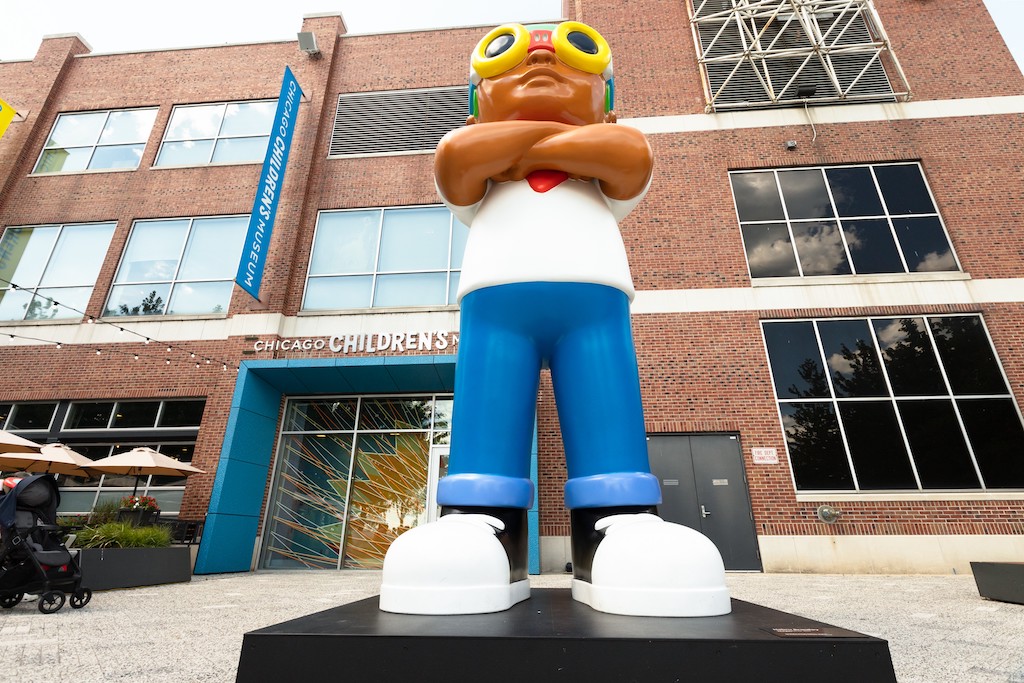
“It’s a harmonizing role; it involves a lot of listening and trying to keep everybody at the table. I hope that even if they determine, ‘Well, we’re never going to build that thing,’ I want them to leave feeling like it was a great process getting to that decision.”
A great addition
Looking ahead, Cup says that the addition of Beckman and the expansion in this area will allow the firm to be better partners to cultural heritage institutions, brands, other design firms, and those who do not have fabrication capabilities as part of their business:
“The better we are at developing projects, the more design we bring, and the more we can collaborate with people, including design firms, at any point in the project. Often, firms will get a project to a certain point, and say, ‘Hey, we have these ideas, and we need to prove them, through prototypes, through visitor testing, through bench engineering.’ Having a robust strategy and design development department as part of the company allows us to work with those institutions more efficiently. We speak the same language.”
Wilson, who worked with Beckman at the Museum of Science and Industry for 12 years, says:
“John is one of the most adept strategic thinkers I know with respect to crafting amazing experiences. He’s got incredible design chops and a smart sensibility around the visitor experience.
“There’s a shared vocabulary between us, and an innate understanding of the combined Venn diagram that the two of us form. When you add the giant capabilities of Bridgewater Studio to that, it’s a potent combination. That combination positions us well for the next growth spurt.
“Beckman is unmatched as a creator of experiences. He understands great experience design and he is wildly imaginative, but he’s also incredibly business-savvy. He also has deep roots in production. So, he knows when to dream big, and when to be a pragmatist. He can often do those two things simultaneously, and it’s fun to watch. And now he’s on our team. It’s going to be great.”
